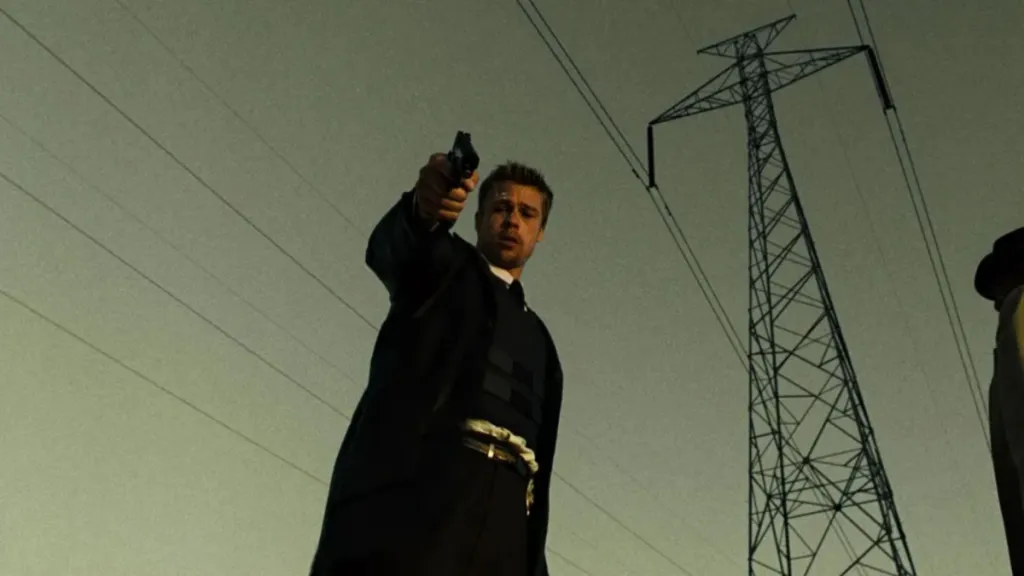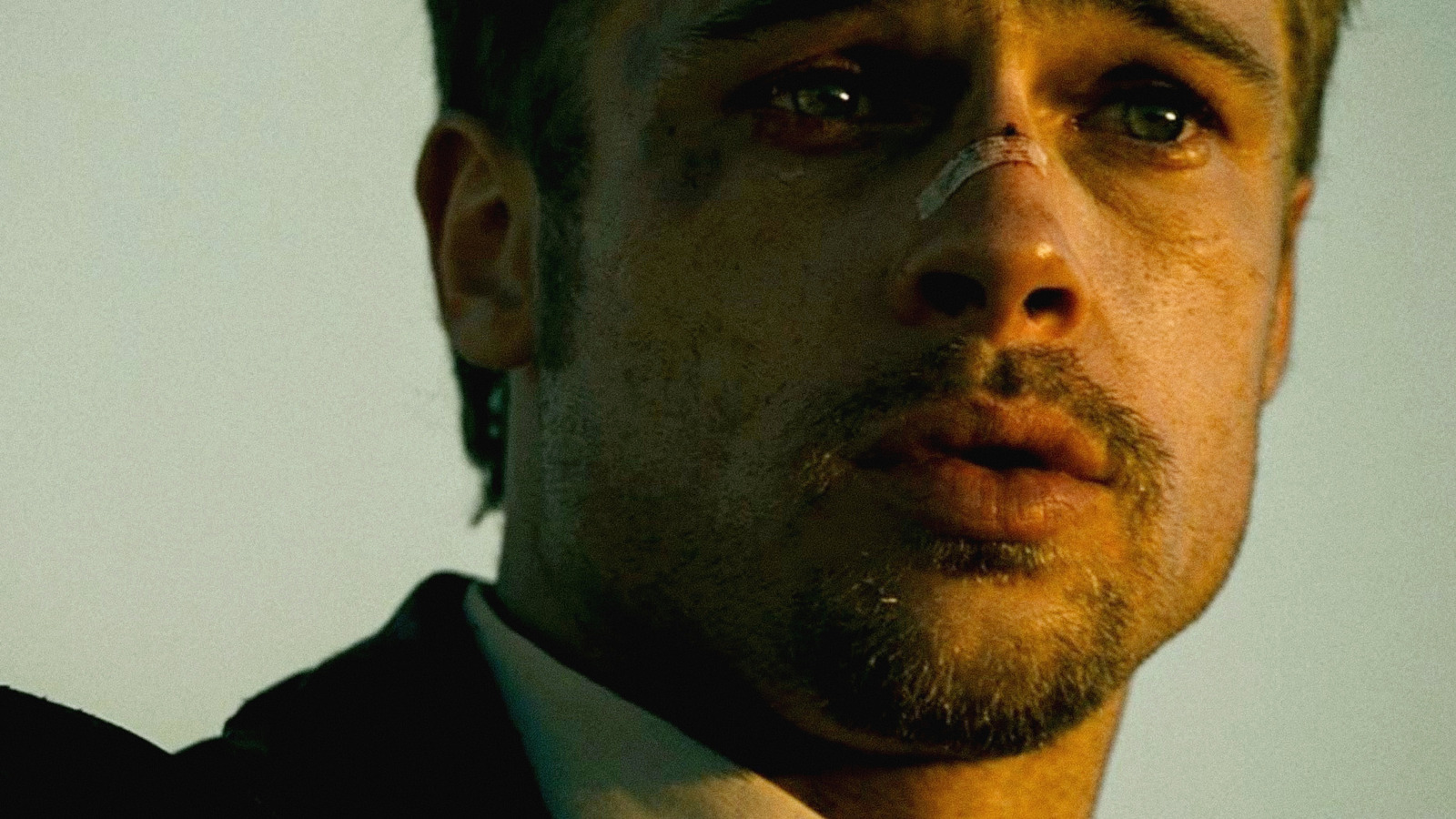Nearly 30 years after its release, David Fincher’s Se7en continues to be remembered for one of the most intense and memorable endings in cinematic history. The film’s finale, infamous for its disturbing twist, solidified the movie’s status in pop culture, with even those who haven’t seen it aware of the climactic reveal. Celebrated as one of the most compelling thrillers of all time, Se7en also served as a major career boost for Brad Pitt.
Alongside Pitt, Morgan Freeman, and Gwyneth Paltrow provided strong performances that elevated the film’s emotional and narrative depth. Fincher’s careful direction ensured that the final sequence would resonate with audiences for decades, cementing Se7en as an enduring classic.
Se7en follows detectives Somerset (Morgan Freeman) and Mills (Brad Pitt) as they track a serial killer named John Doe (Kevin Spacey), whose murders are based on the seven deadly sins. The narrative builds tension as the detectives uncover a series of meticulously planned crimes, each representing a different sin.
Doe’s methodical approach and the detectives’ contrasting personalities—Somerset’s experience versus Mills’ impulsiveness drive the story forward. The culmination of their investigation brings them to a remote location, where John Doe’s ultimate plan is revealed, positioning Mills as an unsuspecting participant in the killer’s final act.
Each murder in Se7en is symbolic, representing one of the seven deadly sins. Gluttony is illustrated through an unnamed man who is force-fed to death. Greed is represented by defense attorney Eli Gould, forced to cut off a pound of flesh. Sloth is exemplified by Theodore Victor Allen, a drug dealer and child abuser, kept alive but immobilized for over a year.
Lust claims the life of a sex worker, coerced into a horrific act. Pride is punished through Rachel Slade, a model who chooses death after her face is mutilated. Finally, envy and wrath are reserved for the film’s climax, involving Mills and his wife, Tracy. Each sin is portrayed with striking creativity, reflecting both Doe’s meticulous planning and the film’s dark tone.

Mills’ Tragic Transformation Fulfilled Doe’s Plan Through Wrath and Human Vulnerability
The narrative tension peaks when Mills and Somerset are led to the final victims after Doe’s arrest. A package arrives for Mills, containing the severed head of his wife, Tracy, whom Doe killed out of envy. This revelation triggers Mills’ transformation into the final embodiment of wrath, completing Doe’s deadly design.
By manipulating Mills into murdering him, Doe ensures his plan’s fulfillment even from custody. The culmination of the seven sins in this way reinforces the film’s message about human vulnerability and moral corruption, leaving audiences absorbed by the interplay between fate and free will.
The infamous box in Se7en is never fully shown on screen, but the film makes it clear that it contains Tracy Mills’ severed head. The ambiguity surrounding the box heightens the horror while keeping the audience’s focus on the psychological impact rather than the literal image.
John Doe’s explanation that he killed Tracy out of envy solidifies the narrative’s twist. The tension and suspense are amplified by Mills’ reaction, showing how the killer orchestrated events to manipulate his prey emotionally. The box’s contents, though unseen, are central to the film’s unforgettable conclusion.
Mills’ decision to kill John Doe is more than a personal act of revenge; it signifies the completion of Doe’s plan and underscores the idea that the “good guys” don’t truly win. By committing murder in a fit of wrath, Mills embodies the very sin Doe sought to expose. Doe’s objective was to confront humanity with its apathy and moral weaknesses, and in drawing Mills into his scheme, he succeeds. This ending challenges conventional notions of justice in cinema, leaving audiences unsettled by the moral complexity of the narrative.

Somerset Confronts Evil and Chooses Duty Amidst the City’s Moral Decay
While Mills is devastated, Somerset’s journey is also profoundly affected. The film’s final quote, referencing Ernest Hemingway, “The world is a fine place and worth fighting for. I agree with the second part,” indicates that Somerset chooses to continue his role as a detective rather than retire.
Doe’s actions have disrupted Somerset’s apathy, forcing him to confront the reality of evil in the world. The ambiguous ending allows viewers to interpret Somerset’s decision in multiple ways, suggesting that while the world remains corrupt and punishing, there is still a duty to fight against it.
The unnamed, perpetually rainy city in Se7en is depicted as a bleak, morally decayed environment. Its oppressive atmosphere reflects the film’s biblical and purgatorial themes, emphasizing that human sin and societal apathy contribute to the urban decay. John Doe uses the city’s moral decay to rationalize his murders, aiming to provoke citizens into moral awareness.
The film draws parallels to classical literature, including Dante’s Divine Comedy and Milton’s Paradise Lost, using the setting to reinforce the allegorical weight of Doe’s sins and the broader human condition.
Se7en is part of a lineage of David Fincher films known for their unforgettable endings. Like Fight Club, which closes with ambiguity and destruction, or Gone Girl, where the villain triumphs, Fincher consistently challenges audiences with morally complex finales. Even The Game, though less celebrated, leaves viewers questioning reality and the protagonist’s agency. In Se7en, Fincher combines narrative clarity with emotional impact, ensuring the ending is both intense and thematically consistent, cementing his reputation for crafting iconic cinematic conclusions.
The ending of Se7en remains one of the most celebrated in film history, despite initial studio concerns over its bleakness. Fincher fought to preserve the original conclusion, understanding that a conventional happy ending would betray the story’s tone. The production also showcased meticulous attention to detail, such as creating a realistic weight for the box, ensuring that actor reactions conveyed the horror convincingly.
The film’s enduring popularity lies in its combination of suspense, psychological intensity, and moral complexity, with the final scene exemplifying the perfect blend of narrative, character, and atmosphere, solidifying Se7en as a thriller that continues to resonate with audiences.



